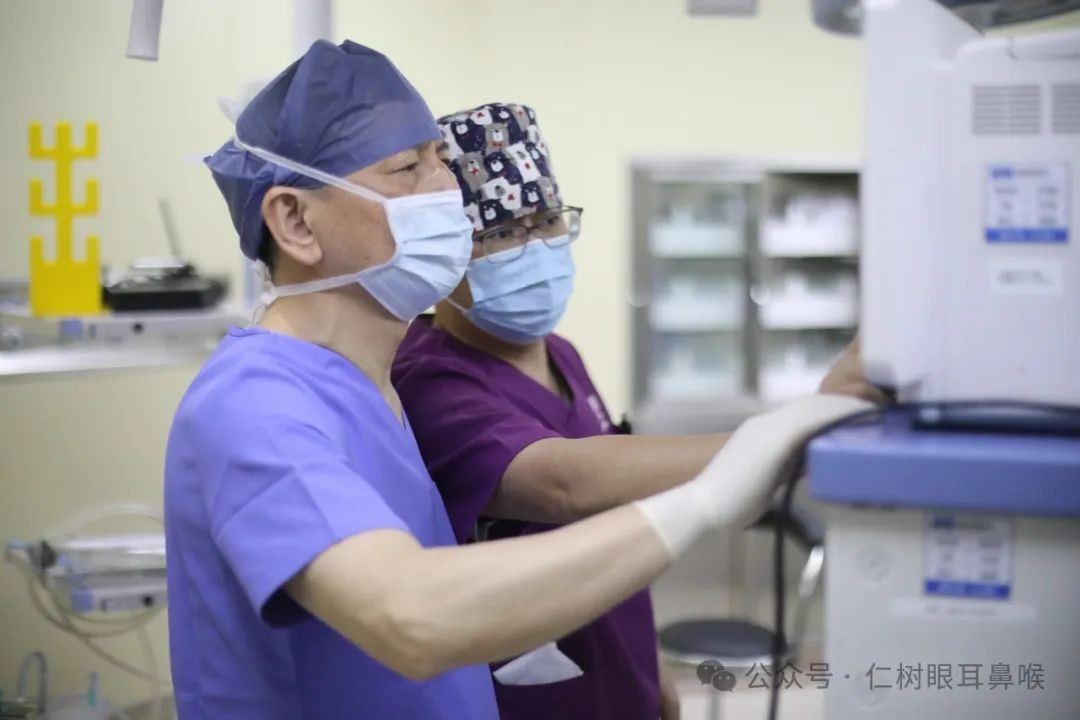source: 2025-04-27 17:57:16 Secondary reading
The Operating Room's Own "Pilots"
In the tense atmosphere of the operating room, we often think of surgeons laser-focused on their work and nurses bustling nearby. Yet there’s another critical figure in this scene—the anesthesiologist—quietly acting as the "pilot" of the operating room, steering the course of safety throughout surgery.
You might think anesthesiologists simply "put patients to sleep"? Far from it!
Their work spans the entire surgical journey: preoperative evaluations, intraoperative precision, and postoperative pain management. Every detail reflects their relentless pursuit of safety. Today, let’s step into the daily routines of RenShu Ophthalmology & ENT’s anesthesiologists.

Preoperative Phase
Precision Evaluation: Building a Safety Foundation
Before surgery begins, anesthesiologists are already hard at work.
They meticulously review medical records, assess the patient’s health status, and gather key details such as anesthesia history, drug allergies, and past medical conditions to evaluate anesthesia risks. Physical examinations of the airway, combined with factors like age, sex, weight, and surgery type, inform anesthesia risk stratification. A personalized anesthesia plan is then tailored, including targeted medication to ensure swift postoperative recovery and ease patient and family anxiety.
These rigorous preoperative preparations form the first line of defense for surgical safety. Only when the anesthesia plan is finalized can the surgery proceed.
Intraoperative Phase
Continuous Monitoring: Stabilizing Vital Signs
When the operating room lights dim, anesthesiologists transform into "pilots," fully immersed in their "flight mission."
With sharp focus and advanced skills, they monitor vital signs—heart rate, blood pressure, respiration, and temperature—to maintain stability. They use imported original research anesthesia drugs for reliability and safety, combined with "balloon" inhalation anesthesia to gently induce sleep before intravenous injection, easing patient fears.
They dynamically adjust anesthesia dosages and concentrations based on surgical progress and patient responses, ensuring painless procedures. During emergencies, they remain calm and decisive, swiftly implementing rescue measures to safeguard the operation.
Notably, RenShu Ophthalmology & ENT assigns two experienced anesthesiologists to every surgery, acting as "copilots" to ensure safety.
Postoperative Phase
Pain Management: Crafting a Comfortable Recovery
Anesthesiologists’ work doesn’t end with surgery.
They continue monitoring recovery, ensuring smooth emergence from anesthesia. For postoperative pain, they design individualized analgesic plans, implementing preemptive pain relief before discomfort arises. Adjustments are made flexibly based on real-time needs, with guidance provided to support swift healing. Pain management extends even after discharge.
The process mirrors an aircraft’s journey:
General anesthesia induction, maintenance, and recovery
= Aircraft takeoff, cruising, and landing.
Anesthesiologists, like pilots, face challenges and uncertainties daily. Yet their expertise, diligence, and dedication ensure every surgery proceeds safely.
China Anesthesiology Week
The last week of March each year marks China Anesthesiology Week, honoring the unsung heroes behind the operating room lights. Their silent guardianship deserves our deepest gratitude.
Because of them, we rest assured.